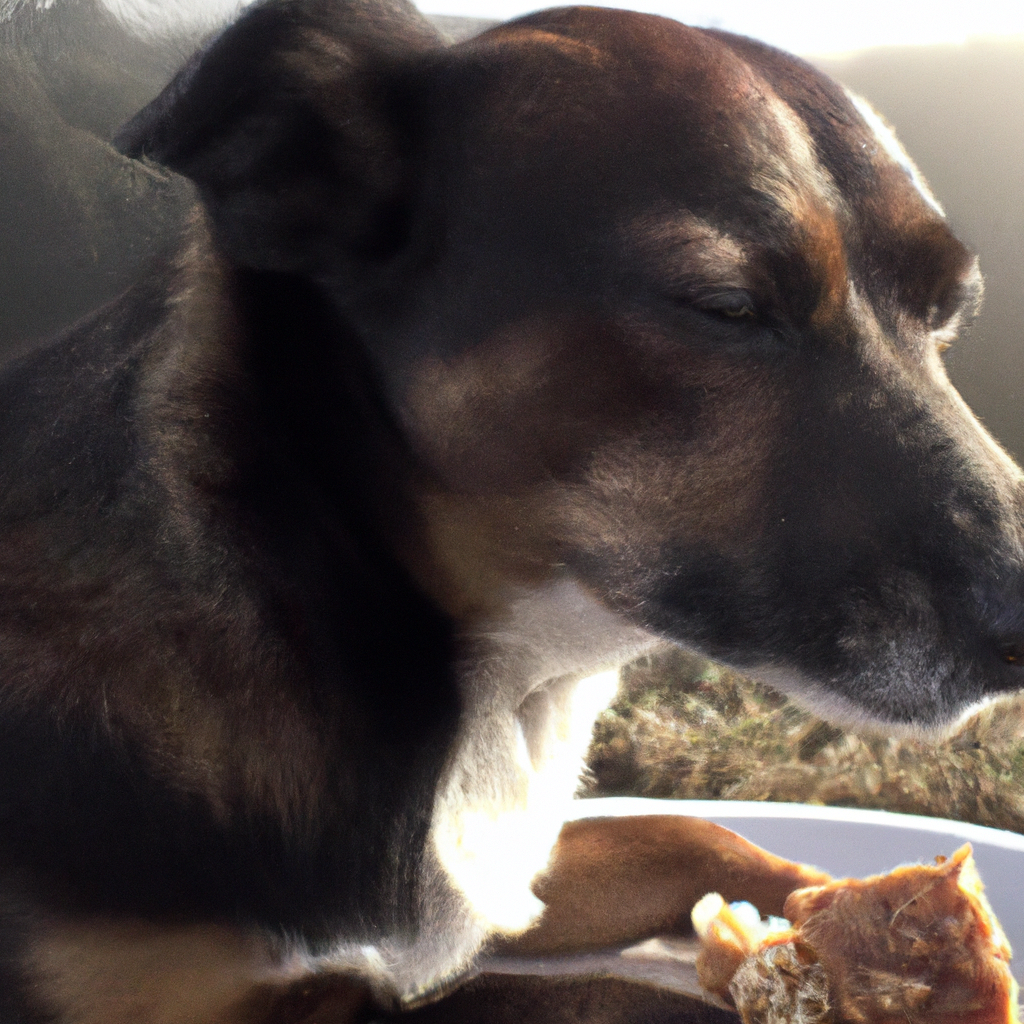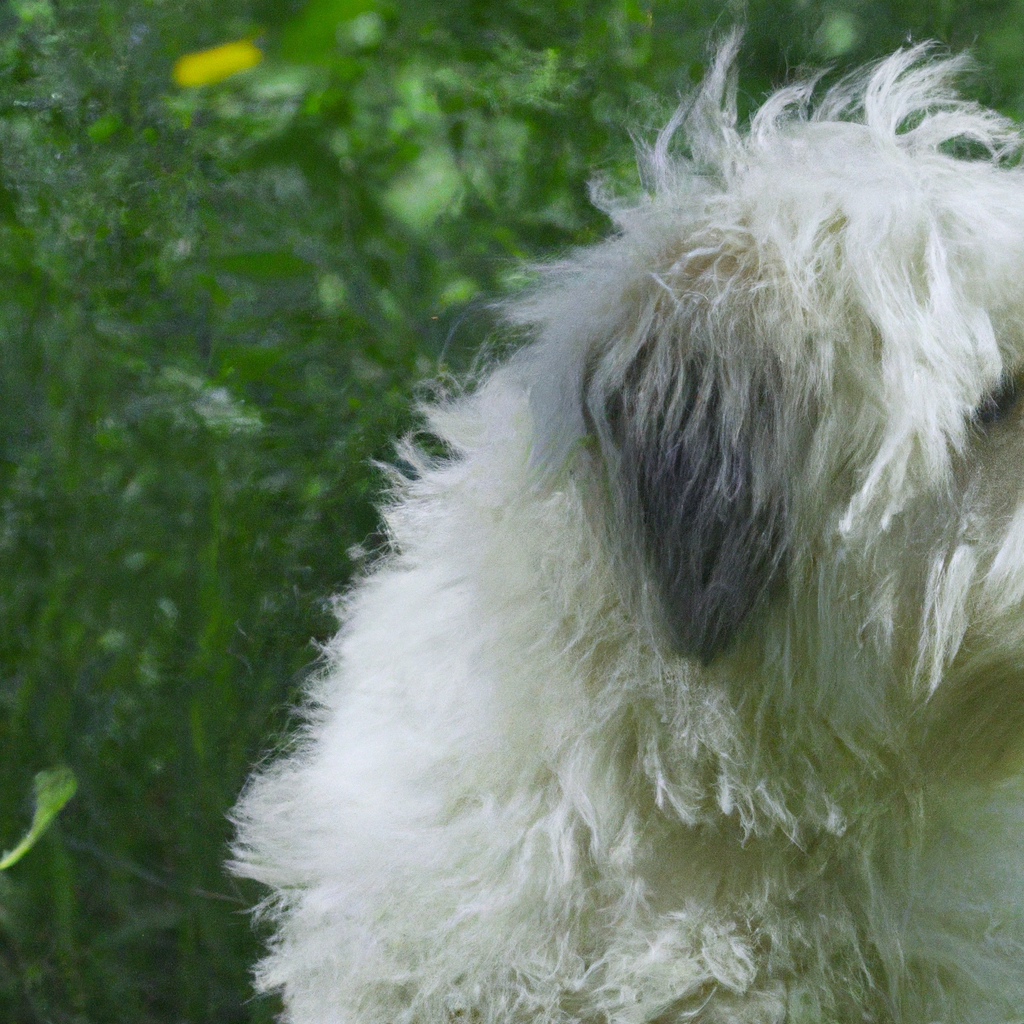“Salmon: A Safe and Nutritious Delight for Dogs!”
Salmon is a popular fish known for its nutritional benefits and rich flavor. Many dog owners wonder if it is safe to feed salmon to their furry companions. In this article, we will explore whether it is safe for dogs to eat salmon and discuss the potential risks and benefits associated with this fish.
Potential Health Benefits of Feeding Salmon to Dogs
Salmon is a popular fish known for its rich flavor and numerous health benefits for humans. But what about our furry friends? Is it safe for dogs to eat salmon? The answer is yes, and not only is it safe, but it can also provide several potential health benefits for our canine companions.
One of the main reasons why salmon is considered a healthy addition to a dog’s diet is its high omega-3 fatty acid content. Omega-3 fatty acids are essential for dogs as they play a crucial role in maintaining a healthy coat and skin. These fatty acids also have anti-inflammatory properties, which can be beneficial for dogs with joint issues or allergies.
In addition to omega-3 fatty acids, salmon is also an excellent source of protein. Protein is essential for dogs as it helps build and repair tissues, supports a healthy immune system, and provides energy. Feeding your dog salmon can be particularly beneficial for active dogs or those recovering from an illness or surgery.
Furthermore, salmon is rich in vitamins and minerals that are vital for a dog’s overall health. It contains B vitamins, which are essential for proper brain function and energy production. Salmon also provides vitamins D and E, which are important for bone health and immune system support, respectively. Additionally, it is a good source of potassium, selenium, and magnesium, which are necessary for various bodily functions.
Another potential health benefit of feeding salmon to dogs is its positive impact on cardiovascular health. The omega-3 fatty acids found in salmon can help reduce inflammation in the arteries, lower blood pressure, and decrease the risk of heart disease. Incorporating salmon into your dog’s diet can be particularly beneficial for older dogs or those with heart conditions.
When feeding salmon to your dog, it is important to ensure that it is cooked thoroughly. Raw or undercooked salmon can contain harmful bacteria or parasites that can cause digestive issues or even food poisoning in dogs. It is recommended to steam, bake, or grill the salmon until it is fully cooked and flaky. Avoid seasoning the salmon with any spices or additives that may be harmful to dogs, such as garlic or onion powder.
While salmon can provide several potential health benefits for dogs, it is important to remember that moderation is key. Too much salmon can lead to an imbalance in nutrients and potentially cause digestive upset. It is best to consult with your veterinarian to determine the appropriate amount of salmon to include in your dog’s diet based on their specific needs and health condition.
In conclusion, feeding salmon to dogs can offer several potential health benefits. Its high omega-3 fatty acid content, along with its protein, vitamin, and mineral content, can contribute to a healthy coat, skin, and overall well-being. Additionally, salmon’s positive impact on cardiovascular health makes it a valuable addition to the diet of dogs with heart conditions or older dogs. However, it is crucial to cook the salmon thoroughly and feed it in moderation to avoid any potential digestive issues. As always, consulting with your veterinarian is recommended to ensure that salmon is suitable for your dog and to determine the appropriate amount to include in their diet.
Risks and Precautions of Including Salmon in a Dog’s Diet
Salmon is a popular and nutritious food for humans, but can dogs safely enjoy this fish as well? While salmon can provide many health benefits for dogs, there are also risks and precautions that need to be considered before including it in their diet.
One of the main concerns with feeding dogs salmon is the potential for salmon poisoning disease. This disease is caused by a parasite called Nanophyetus salmincola, which can be found in raw or undercooked salmon. If a dog consumes infected salmon, the parasite can attach itself to the dog’s intestines and release a toxin that can be fatal if left untreated.
To prevent salmon poisoning disease, it is crucial to ensure that any salmon given to dogs is fully cooked. This means that the fish should be cooked at a temperature of at least 145 degrees Fahrenheit to kill any potential parasites. Additionally, it is important to remove any bones from the salmon before feeding it to dogs, as bones can pose a choking hazard or cause internal injuries.
Another risk associated with feeding dogs salmon is the potential for mercury contamination. Salmon, especially wild-caught varieties, can contain high levels of mercury, which can be toxic to dogs if consumed in large quantities. Mercury poisoning can lead to neurological issues, kidney damage, and even death.
To minimize the risk of mercury contamination, it is recommended to feed dogs smaller fish, such as sardines or anchovies, which have lower mercury levels compared to larger fish like salmon. Additionally, limiting the amount of salmon given to dogs and opting for salmon that is sourced from reputable suppliers can help reduce the risk of mercury exposure.
In addition to these risks, some dogs may also have allergies or sensitivities to salmon. Just like humans, dogs can develop allergies to certain foods, including fish. Common symptoms of a salmon allergy in dogs include itching, skin rashes, gastrointestinal upset, and respiratory issues. If a dog shows any signs of an allergic reaction after consuming salmon, it is important to consult a veterinarian for further guidance.
Despite these risks and precautions, salmon can still be a beneficial addition to a dog’s diet when prepared and served properly. Salmon is an excellent source of omega-3 fatty acids, which can promote healthy skin and coat, reduce inflammation, and support brain function. It is also rich in protein, vitamins, and minerals that can contribute to overall health and well-being.
When introducing salmon to a dog’s diet, it is recommended to start with small portions and monitor for any adverse reactions. If the dog tolerates salmon well, it can be incorporated into their regular meals as an occasional treat or as part of a balanced homemade diet. However, it is important to remember that salmon should never replace a dog’s regular diet, and it should always be served in moderation.
In conclusion, while there are risks and precautions associated with feeding dogs salmon, it can still be a safe and nutritious addition to their diet when prepared and served properly. By ensuring that the salmon is fully cooked, removing any bones, and being mindful of potential allergies or sensitivities, dog owners can provide their furry friends with the many health benefits that salmon has to offer.
How to Safely Prepare and Serve Salmon for Dogs
Salmon is a popular and nutritious food for humans, but can dogs safely eat it too? The answer is yes, dogs can eat salmon, but there are some important considerations to keep in mind to ensure their safety and well-being. In this section, we will discuss how to safely prepare and serve salmon for dogs.
First and foremost, it is crucial to only feed dogs cooked salmon. Raw salmon can contain harmful bacteria and parasites that can cause serious health issues in dogs. Therefore, it is essential to cook the salmon thoroughly before offering it to your furry friend. Grilling, baking, or steaming the salmon are all safe cooking methods that will eliminate any potential pathogens.
When preparing salmon for your dog, it is important to remove all bones. Fish bones can pose a choking hazard and may also splinter, causing internal injuries. Carefully inspect the cooked salmon and remove any bones before serving it to your dog. Additionally, be cautious of any small bones that may be present in canned salmon and ensure they are removed as well.
Another consideration when serving salmon to dogs is the seasoning. While humans often enjoy salmon seasoned with various herbs and spices, it is best to keep it plain and simple for dogs. Many seasonings, such as garlic and onion, can be toxic to dogs and should be avoided. Salt and other high-sodium seasonings should also be omitted, as they can lead to dehydration and other health problems in dogs. Plain, unseasoned salmon is the safest option for your furry friend.
In terms of portion size, it is important to feed salmon to dogs in moderation. While salmon is a healthy protein source, it should not make up the majority of their diet. A general guideline is to offer salmon as an occasional treat or as part of a balanced meal. The appropriate portion size will depend on your dog’s size, age, and overall health. Consulting with your veterinarian can help determine the right amount of salmon to feed your dog.
When serving salmon to your dog, it is also important to consider any potential allergies or sensitivities. Some dogs may be allergic to fish, including salmon. If you have never fed your dog salmon before, it is recommended to introduce it gradually and monitor for any adverse reactions. Signs of an allergic reaction may include itching, vomiting, diarrhea, or difficulty breathing. If you notice any of these symptoms, discontinue feeding salmon and consult with your veterinarian.
Lastly, it is important to store any leftover salmon properly. Salmon should be refrigerated promptly after cooking and consumed within a few days. If you have a large amount of leftover salmon, it can be frozen for future use. However, be sure to wrap it tightly to prevent freezer burn and label it with the date to ensure it is used within a reasonable timeframe.
In conclusion, dogs can safely eat salmon, but it is important to follow certain guidelines to ensure their safety and well-being. Cooked, boneless, and unseasoned salmon is the best option for dogs. It should be served in moderation and introduced gradually if your dog has never had it before. Monitoring for any allergic reactions is crucial, and any leftovers should be stored properly. By following these guidelines, you can safely incorporate salmon into your dog’s diet and provide them with a nutritious and delicious treat.
Common Signs of Salmon Poisoning in Dogs and How to Treat It
Salmon is a delicious and nutritious food that many humans enjoy. It is packed with omega-3 fatty acids, protein, and vitamins. However, when it comes to our furry friends, the question arises: is it safe for dogs to eat salmon? While salmon can be a healthy addition to a dog’s diet, there is a potential risk of salmon poisoning.
Salmon poisoning is a condition that affects dogs who consume raw or undercooked salmon, trout, or other fish that may be infected with a parasite called Nanophyetus salmincola. This parasite carries a bacteria called Neorickettsia helminthoeca, which is the actual cause of salmon poisoning. It is important to note that this condition is specific to dogs and does not affect humans or other animals.
One of the most common signs of salmon poisoning in dogs is diarrhea. The diarrhea may be watery and may contain blood. Other gastrointestinal symptoms may include vomiting, loss of appetite, and weight loss. Additionally, dogs with salmon poisoning may experience fever, dehydration, and swollen lymph nodes. These symptoms usually appear within six days of consuming the infected fish.
If you suspect that your dog may have salmon poisoning, it is crucial to seek veterinary care immediately. The veterinarian will perform a thorough examination and may recommend diagnostic tests such as blood work and fecal analysis to confirm the diagnosis. Prompt treatment is essential to prevent the condition from progressing and causing further complications.
The treatment for salmon poisoning typically involves a combination of antibiotics and supportive care. The antibiotics are used to target and eliminate the bacteria causing the infection. Supportive care may include intravenous fluids to combat dehydration, anti-nausea medication to alleviate vomiting, and medications to manage pain and fever. In severe cases, hospitalization may be necessary to closely monitor the dog’s condition and provide intensive care.
It is important to note that without treatment, salmon poisoning can be fatal for dogs. However, with early intervention and appropriate treatment, the prognosis is generally good. Most dogs recover fully within two to three weeks, although it may take longer for them to regain their strength and appetite.
To prevent salmon poisoning, it is crucial to ensure that any fish fed to dogs is thoroughly cooked. Cooking fish at a temperature of 145°F (63°C) kills the bacteria and parasites that may be present. It is also advisable to avoid feeding dogs raw or undercooked fish from rivers or streams, as these are more likely to be contaminated with the parasite.
In conclusion, while salmon can be a healthy addition to a dog’s diet, it is important to be aware of the potential risk of salmon poisoning. Common signs of salmon poisoning in dogs include diarrhea, vomiting, and loss of appetite. Prompt veterinary care is crucial for diagnosis and treatment. By cooking fish thoroughly and avoiding raw or undercooked fish from rivers or streams, dog owners can help prevent salmon poisoning and ensure the health and well-being of their furry companions.
Alternatives to Salmon for a Balanced and Safe Canine Diet
Salmon is often touted as a healthy food for humans, packed with omega-3 fatty acids and other beneficial nutrients. But what about our furry friends? Is it safe for dogs to eat salmon? While salmon can be a nutritious addition to a canine diet, there are some important considerations to keep in mind.
First and foremost, it’s crucial to ensure that the salmon is properly cooked. Raw or undercooked salmon can contain harmful bacteria and parasites that can make your dog sick. Cooking the salmon thoroughly will help eliminate these risks and make it safe for your furry friend to consume.
Another important factor to consider is the type of salmon you are feeding your dog. Wild-caught salmon is generally considered to be a healthier option than farm-raised salmon. Wild-caught salmon tends to have lower levels of contaminants such as mercury and PCBs, which can be harmful to both humans and animals. If possible, opt for wild-caught salmon to minimize these risks.
While salmon can provide dogs with essential nutrients, it should not be the sole source of their diet. Dogs require a balanced diet that includes a variety of proteins, carbohydrates, and fats. Incorporating other protein sources such as chicken, beef, or turkey can help ensure that your dog is getting all the necessary nutrients they need.
In addition to protein, dogs also need carbohydrates for energy. Including sources such as sweet potatoes, brown rice, or quinoa can provide your dog with the necessary carbohydrates to fuel their active lifestyle. It’s important to note that dogs have different nutritional needs than humans, so it’s best to consult with a veterinarian to determine the appropriate amount and type of carbohydrates for your dog.
Fats are another essential component of a balanced canine diet. While salmon is a good source of healthy fats, it’s important to remember that dogs also need other sources of fat. Including fats from sources such as olive oil or coconut oil can help provide your dog with a well-rounded diet.
If you’re concerned about the potential risks of feeding your dog salmon, there are plenty of alternative protein sources that can provide similar nutritional benefits. Chicken, for example, is a lean protein that is easily digestible for dogs. It’s also a good source of essential amino acids that can help support muscle growth and repair.
Beef is another protein option that can be included in your dog’s diet. It’s important to choose lean cuts of beef to avoid excessive fat intake. Lean ground beef or beef liver can be a great addition to your dog’s meals.
Turkey is another protein source that can be beneficial for dogs. It’s a lean meat that is rich in essential nutrients such as iron and zinc. Just like with other proteins, it’s important to ensure that the turkey is properly cooked before feeding it to your dog.
In conclusion, while salmon can be a healthy addition to a canine diet, it’s important to take certain precautions to ensure its safety. Cooking the salmon thoroughly and opting for wild-caught varieties can help minimize the risks associated with consuming this fish. Additionally, it’s important to remember that salmon should not be the sole source of a dog’s diet and should be supplemented with other proteins, carbohydrates, and fats. Consulting with a veterinarian can help determine the appropriate diet for your furry friend and ensure that they are getting all the necessary nutrients for optimal health.
Q&A
1. Is it safe for dogs to eat salmon?
Yes, it is generally safe for dogs to eat salmon.
2. Can dogs eat raw salmon?
Raw salmon can contain parasites that may be harmful to dogs, so it is not recommended to feed them raw salmon.
3. Can dogs eat cooked salmon?
Cooked salmon is safe for dogs to eat, as long as it is boneless, skinless, and free from any seasonings or additives.
4. Are there any health benefits of feeding dogs salmon?
Salmon is a good source of omega-3 fatty acids, which can promote a healthy coat, skin, and immune system in dogs.
5. Are there any risks associated with feeding dogs salmon?
Salmon can sometimes contain high levels of mercury and other contaminants, so it is important to feed dogs salmon in moderation and ensure it is sourced from reputable sources.In conclusion, it is generally safe for dogs to eat salmon as long as it is cooked thoroughly and served in moderation. However, it is important to remove all bones and ensure that the salmon is not seasoned with any harmful ingredients such as garlic or onion. Additionally, it is advisable to consult with a veterinarian before introducing salmon or any new food into a dog’s diet, especially if the dog has any pre-existing health conditions.





